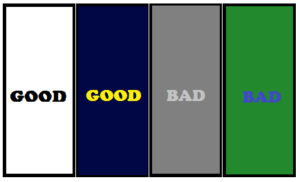UI Palette choices play a bigger role in SEO than many people realize. A website’s colors influence not just branding but also search performance.
As a matter of fact, design and optimization are deeply connected in 2025. When colors help usability, they support engagement and search visibility. Ignoring palette decisions can harm user behavior and ranking signals.
Why Color and SEO Are Connected
Search engines value user experience now more than ever. Colors determine whether users find a site accessible or confusing.
For example, contrast impacts readability, which affects dwell time. If visitors leave quickly, rankings may drop as a result. Consequently, UI Palette choices directly influence site performance in search. All of it is directly related to UI/UX Knowledge.
The Psychology Behind Color in Digital Spaces
Colors create emotions and influence decisions instantly. Blue feels trustworthy, while red signals urgency or action. If colors misalign with brand values, users feel disconnected.
Therefore, selecting palettes is not only about design but also about marketing. This dual impact highlights the role of color in SEO.
Accessibility and SEO Impact
Accessibility is no longer optional in web design. Visually impaired users need clear contrasts and readable text.
Google rewards websites that support inclusive design practices. Sites with poor contrast often face higher bounce rates.
Hence, UI Palette choices become ranking factors indirectly.
The Role of Contrast Ratios
Contrast ratios help determine if text is readable on backgrounds. A proper ratio ensures clarity across devices and lighting conditions. If users struggle to read, they abandon content quickly.
As a result, engagement metrics suffer, impacting search signals. Thus, smart UI Palette choices keep text clear and engaging.

How UI Influences On-Page Behavior
User interaction signals guide modern search algorithms strongly. Time on page, click-through rate, and bounce matter equally. Colors affect all these by shaping mood and attention.
For example, a clear call-to-action in bold color stands out. This simple choice increases clicks and supports SEO success.
Practical Examples of SEO and Color
Certain industries rely heavily on trust-building design.
- Banks often use blue to represent stability and security.
- Eco-friendly brands lean toward green for sustainability.
In both cases, colors improve trust and engagement simultaneously.
Therefore, UI Palette choices support credibility and ranking alike.
Bullet Points: Why Colors Matter for SEO
- Clear contrasts improve readability, lowering bounce rates.
- Branded palettes reinforce identity, helping repeat visits.
- Strong CTA colors increase interaction, boosting engagement metrics.
- Accessible palettes ensure compliance, aligning with Google priorities.
- Consistency in design builds trust, leading to better conversions.
The Hidden Link Between Branding and Visibility
Branding consistency boosts recognition across channels effectively. When users remember colors, they return and engage more.
This loyalty increases branded searches, a major SEO factor. Not only … but also, consistent palettes improve trust.
Therefore, UI Palette choices support both brand and search authority.
Common Mistakes in UI Palette Selection
Some businesses choose colors without considering usability.
- Light text on light backgrounds often causes readability issues.
- Overusing vibrant tones overwhelms users and pushes them away.
At the same time, ignoring cultural color meanings harms trust. Avoiding these errors ensures SEO-friendly and user-focused palettes.
Testing and Optimization of Palettes
Color performance must be tested like any other element.
- Heatmaps show where users click or ignore on pages.
- A/B testing different palettes reveals which drives better behavior.
- Moreover, these insights help align design with SEO goals.
Overall, testing UI Palette choices leads to stronger results.
Future of Color in SEO
The role of color will only expand further. Voice search and AR still depend on visual engagement. If palettes align with usability, rankings improve automatically. In the same way, strong palettes increase conversion power.
Thus, UI Palette choices remain critical for SEO success.
Conclusion
UI Palette choices affect SEO more than many businesses expect. They shape readability, trust, accessibility, and user interaction signals. If palettes support engagement, rankings benefit consistently. Conversely, poor color planning harms both design and SEO.
In conclusion, smart palette selection is now an optimization necessity.